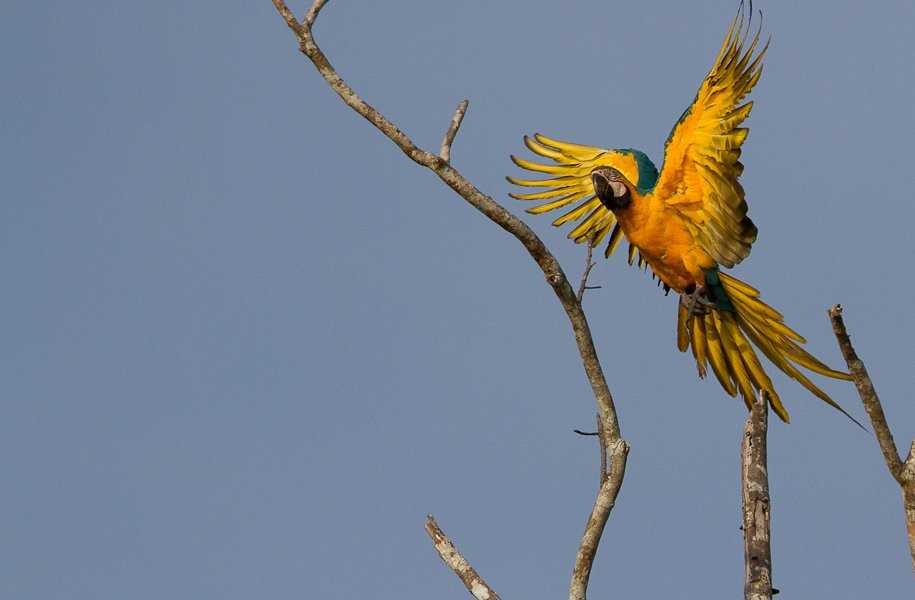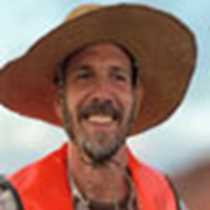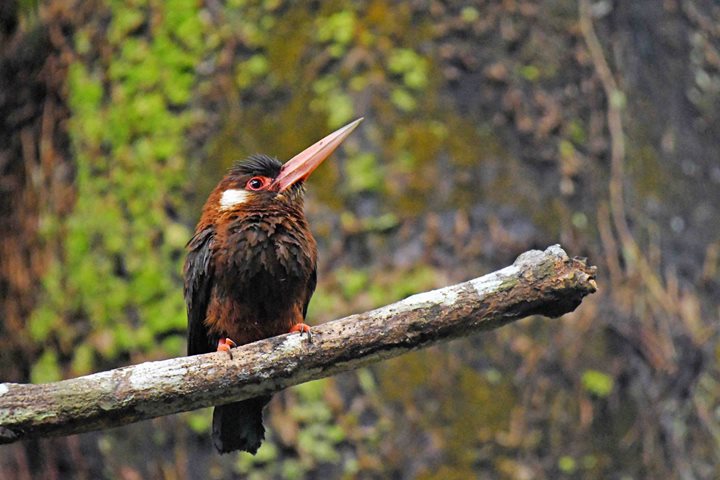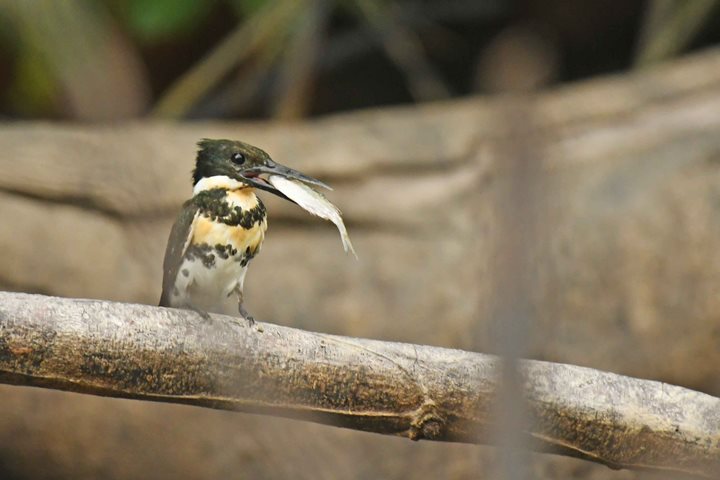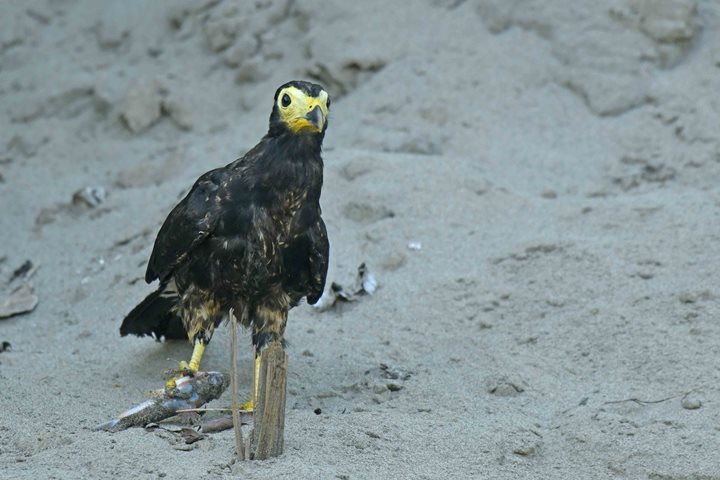After a night of navigating, we arrived to an interesting area along the shore of the Ucayali River. We woke up early to take advantage of the nicest light of the day, the most pleasant temperature, and the waking up of the jungle.
We went to see a particular area called and “aguajal”, a riverside piece of land with plentiful Mauritia flexuosa palms, or aguajes. The dead aguajes are ideal nesting sites for blue and yellow macaws and red-bellied macaws. On the way to to the Aguajal, our local naturalist, Ruddy, found a small troop of monk saki monkeys. We had great looks at these elusive jungle primates. Sakis are some of the most unusual looking monkeys, with a heavy pelage and very long tails.
At the aguajal, we saw small groups of red bellied macaws flying by. Some of them were seen exploring and preparing the nesting sites they will use shortly, when the river´s level increases. We also saw the magnificent blue and yellow macaws in their natural habitat. Their blue color is quite striking in contrast with their green surroundings.
Still before, breakfast we explored the varzea, or flooded forest by foot. We admired the magnificent Ficus trees that stand like giant spiders on the jungle. The root systems of these trees are not only amazing to see, but are equipped with complex mechanisms that allow them to survive for about three months, completely submerged by Amazonian waters.
We headed out to El Dorado River in search for wildlife and sunsets. We planned on staying a little later, so that we could head back to Delfin II by nighttime. Our guides, equipped with spotlights and experience, scanned the shorelines for red glowing eyes. We found a few caimans tree frogs and nocturnal birds. It is always interesting to see the crepuscular animals like nighthawks starting their feeding activity, followed by the numerous species of bats that start replacing the diurnal birds in the sky. Dozens of spectacled caymans were seen, as well as boat billed night herons, common puraques, common potoos.

